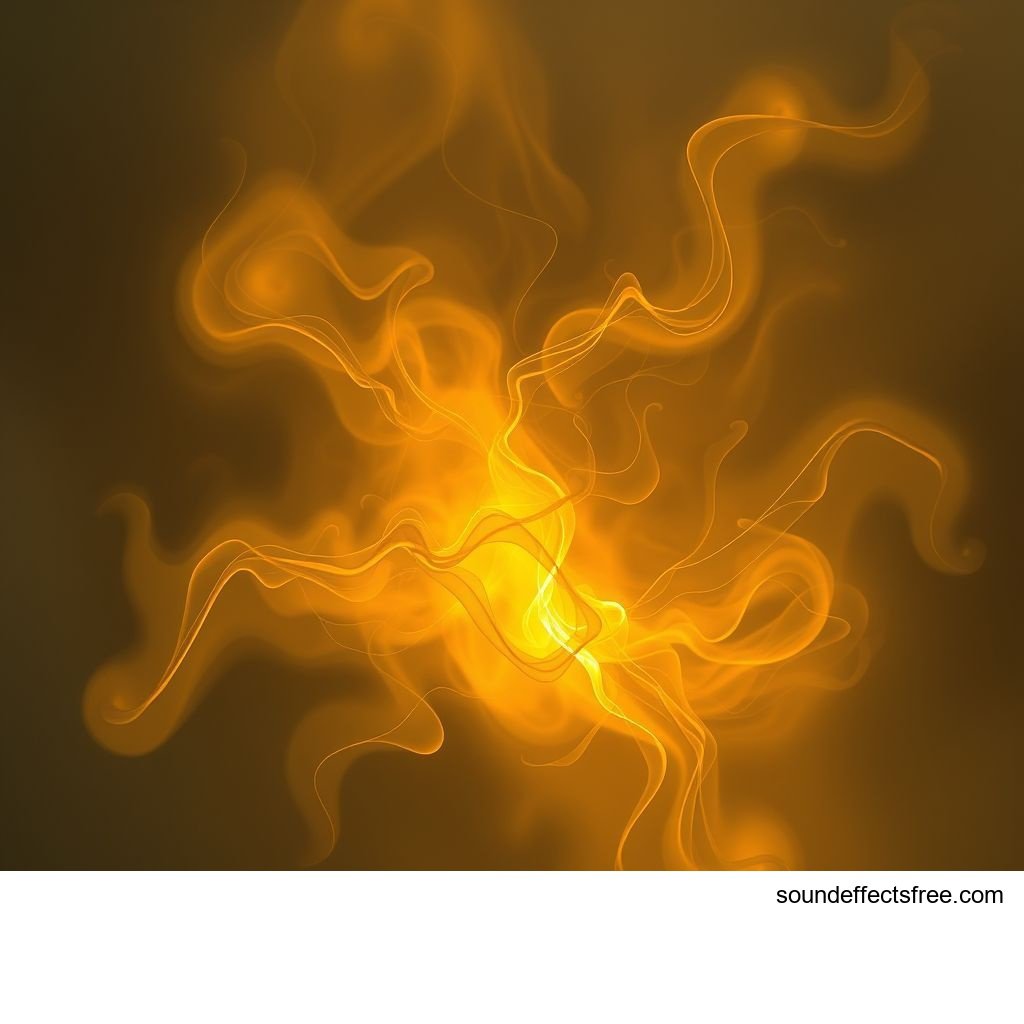Energy Dissipation Fade: Crafting Evocative SFX
Explore the art of designing evocative energy dissipation sound effects. Learn how to create sounds that fade, shimmer, and convey vanishing energy.
The Art of Vanishing Energy
Creating sounds that express vanishing energy is a unique skill. An energy dissipation fade is more than just a volume decrease. It conveys a sense of completion. It shows something stopping. This kind of audio effect adds polish to any project. It guides the listener. It defines transitions clearly. Mastering these sounds improves any media experience. Understanding their design is crucial.
Applications in Media
Energy dissipation sounds are vital in many media forms. They signal the end of an action. They mark a transition. These sfx enhance user interfaces. They also improve game feedback. Film and animation use them too. They can show magic spells ending. Or a device powering down. Good design makes a difference.
Industry-Specific Uses
In video games, energy dissipation sounds are common. A health bar depletes. A magical shield breaks. These sounds provide instant feedback. They confirm an action. They make the game feel responsive. In UI design, every tap has an end. A button press needs an energy release. This adds a physical feel to digital interactions. It guides the user flow. Consider Related energy sounds for more examples. For example, the sound of a successful transaction ending involves a subtle fade. This communicates completion.
Creative Techniques
Think about a character's powers. When a spell finishes, its energy dissipates. A bright flash might end with a gentle shimmer. This shows the energy fading away. In animations, a character might vanish. A dissipation sound aids this visual. It reinforces the effect. It helps the audience believe the visual. It deepens immersion. These creative uses make content more dynamic. They add layers of meaning.
Technical Analysis
Understanding the technical aspects is key. This helps craft perfect sounds. An energy dissipation sound isn't simple. It involves careful shaping. It considers many factors. This includes frequency and waveform. Each element contributes to the final feel.
Waveform Characteristics
A typical energy dissipation sound starts strong. It then quickly diminishes. The waveform shows this. It might have a sharp attack. Then a rapid decay. It may also have a short release. This reflects the vanishing energy. A smooth curve is often desired. This ensures a natural fade. Abrupt cuts feel artificial. They break immersion. Think about how energy truly disappears. It doesn't just cut off. It slowly loses power.
Frequency Profile
Frequency is also important. High frequencies often convey brightness. They can create a shimmering effect. Low frequencies provide weight. They can suggest a deep resonance as energy fades. For a light energy effect, focus on higher tones. Add a touch of reverb. This helps the sound shimmer. For a heavy dissipation, use lower tones. Let them slowly fade out. The frequency profile helps define the sound's character. It tells a story.
Production Tips
Creating these sounds requires specific techniques. It involves both recording and editing. The right tools are also essential. These tips help produce high-quality energy dissipation effects. They make the sounds impactful.
Recording & Editing
Start by recording source material. This could be anything. Synthesizer sweeps work well. Short bursts of white noise are useful. Even natural sounds can be adapted. A brief gust of wind might suggest vanishing energy. Use precise editing. Trim excess noise. Focus on the decay portion. Apply careful EQ. Remove harsh frequencies. Enhance desired ones. A good fade needs smooth transitions. Crossfades prevent clicks. They ensure a clean end to the energy.
Software Tools
Digital Audio Workstations (DAWs) are necessary. Popular choices include Ableton Live, Logic Pro, and Pro Tools. They offer many tools for shaping sound. Use envelopes for precise volume control. Automation helps create dynamic fade effects. Reverb and delay plugins are vital. They extend the sound's tail. They add a sense of space. They can make the sound more ethereal. Look into granular synthesis. It can create complex textures. This helps the energy shimmer and dissolve. Many professional sfx are made this way. Check out resources like Pro Sound Effects for examples.
Creative Implementation
Beyond basic production, creative techniques elevate sounds. Layering and spatial effects add depth. They make the energy dissipation truly evocative. These methods give sounds character.
Layering Methods
Combine multiple sound sources. A synth sweep can be the core. Add a subtle high-frequency shimmers. Blend in a short burst of noise. These layers create complexity. They make the energy more interesting. One layer might fade faster. Another might linger. This creates movement within the sound. It enhances the feeling of something dissolving. A deep rumble might dissipate into an ethereal hum. This layering creates a rich sonic texture.
Spatial Effects
Spatial effects place the sound in a virtual space. Panning makes the sound move. It can move from left to right. This adds dynamic flow. Reverb gives sounds size and distance. A long, diffusing reverb can make the energy sound truly ethereal. It makes it feel like it's vanishing into thin air. Delay creates echoes. These echoes can slowly dissipate. This adds a sense of vastness. It emphasizes the end of the energy. Such effects can transform a simple sound. They make it cinematic.
Sound Pack Integration
High-quality sound packs offer ready-made solutions. They provide diverse energy dissipation sounds. Integrating them correctly is key. This optimizes your workflow.
Using with Other Sounds
An energy dissipation sound works best when integrated. Pair it with an initial impact. A powerful hit might lead to an energy fade. A button tap might lead to a subtle shimmer. Consider the preceding sound. Does it have a lot of energy? Then the dissipation needs to contrast. It should signal the conclusion. For example, after a strong UI Confirm Tap, a small dissipation sound confirms the action's completion. It helps manage the flow of energy in your audio design.
Complete Collection
Using sounds from a complete collection offers consistency. The sounds are often pre-designed to work together. This ensures a cohesive audio experience. A well-designed pack gives you many options. You can find different types of energy dissipation. From subtle hums to dramatic vanishes. This helps maintain a unified audio theme. It makes your project sound professional. It saves valuable time. Get the full sound pack for comprehensive audio solutions. This ensures you have every energy sound you need.
FAQ Section
What is energy dissipation in sound design?
Energy dissipation in sound design is an audio effect. It represents something losing power or vanishing. It signifies an end or a transition. It shows the energy fading away.
How do I make sounds fade naturally?
To make sounds fade naturally, use gentle volume automation curves. Apply smooth EQ adjustments. Add subtle reverb or delay. This helps the sound slowly dissipate.
What makes an energy sound ethereal?
An energy sound becomes ethereal with high-frequency content. Add long, diffusing reverbs. Use subtle modulation. This creates a floating, otherworldly quality. It makes the energy feel light and distant.
Where are energy dissipation sounds commonly used?
Energy dissipation sounds are used in video games for feedback. They appear in user interfaces for confirmation. They also feature in films and animations. They indicate a spell ending or a device powering down. They show energy release.
How can I enhance a fading sound's energy?
Enhance a fading sound's energy by layering. Add a bright, shimmering element. Use resonant frequencies. Or introduce a subtle, delayed echo. This keeps interest as the energy dissolves.




